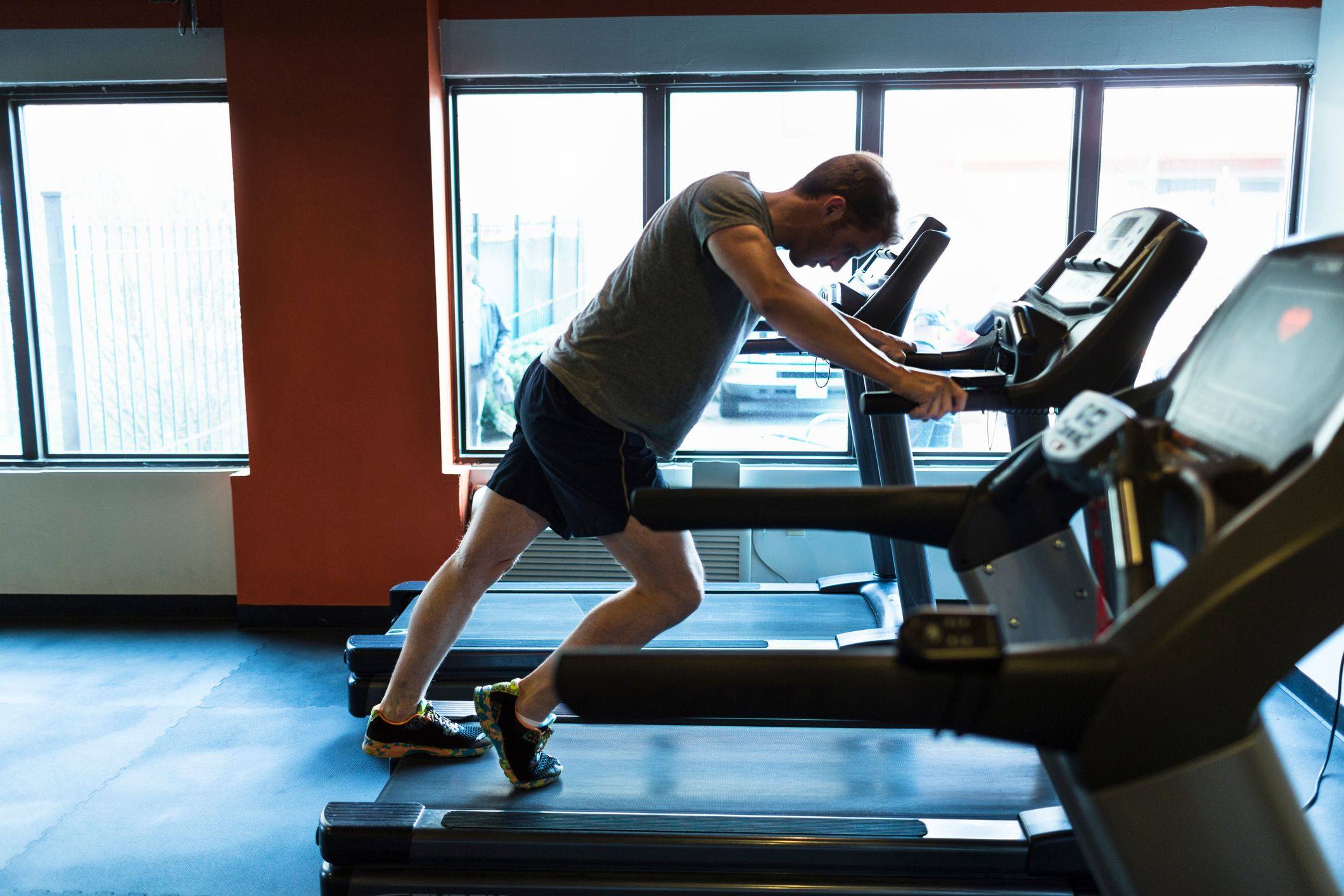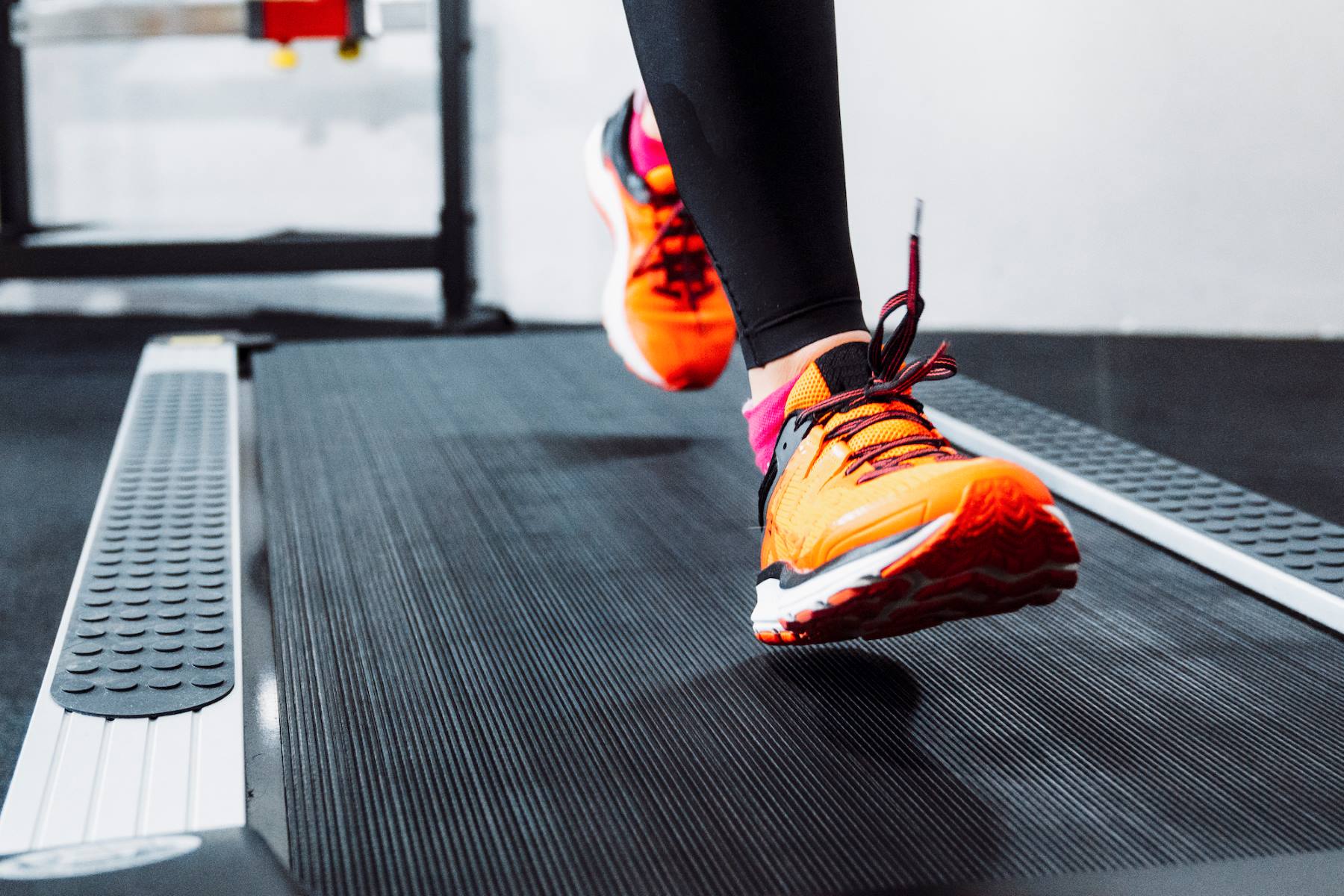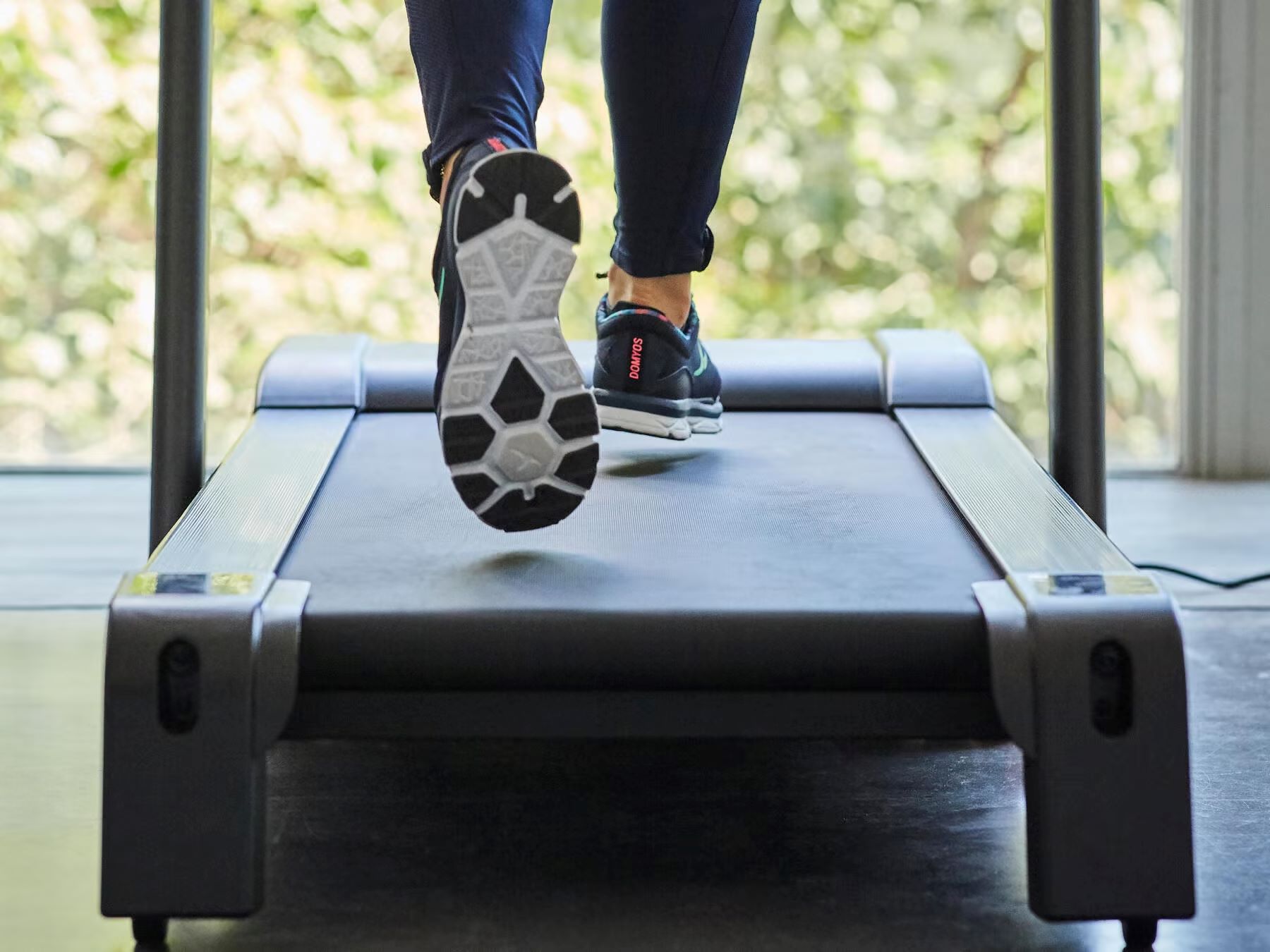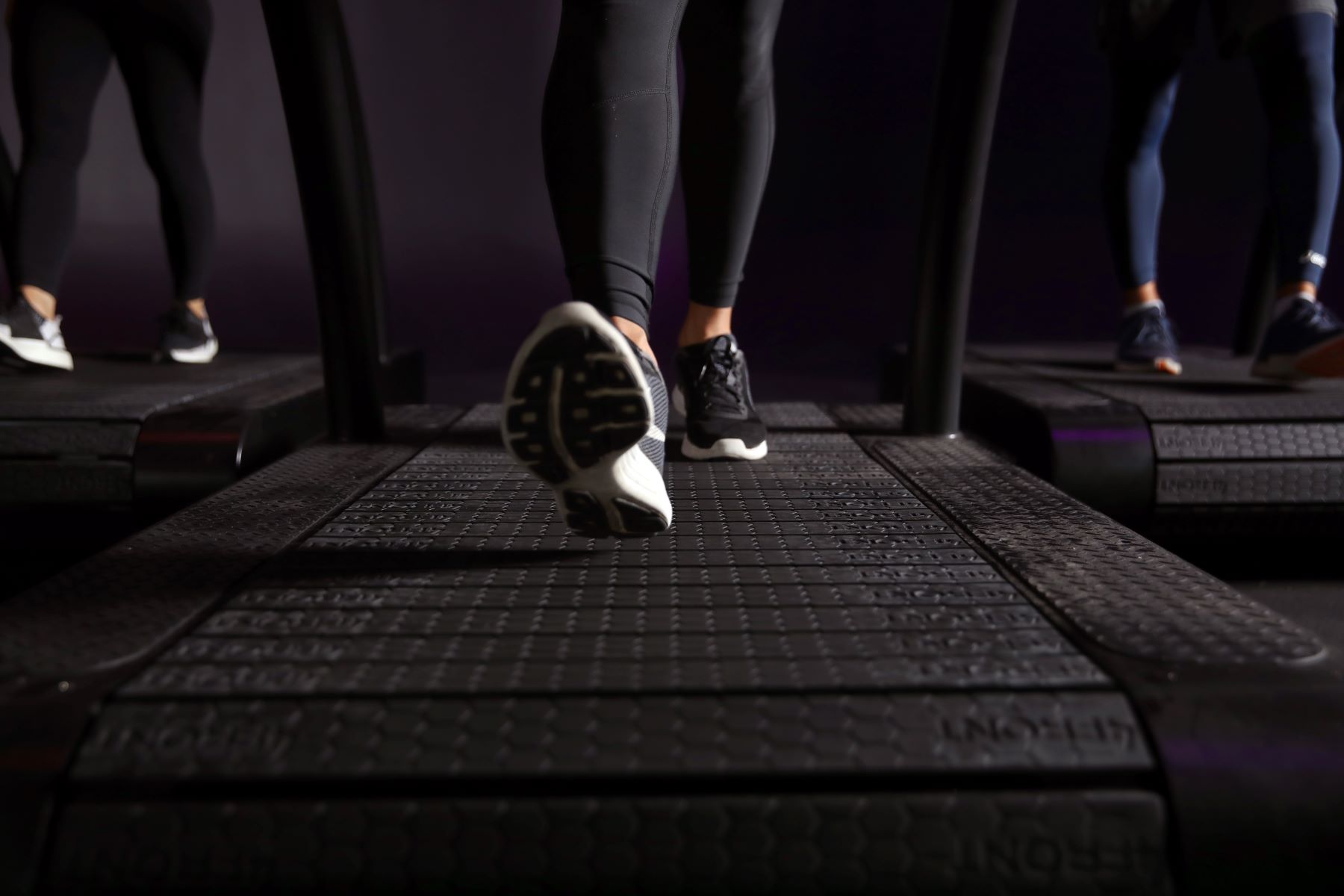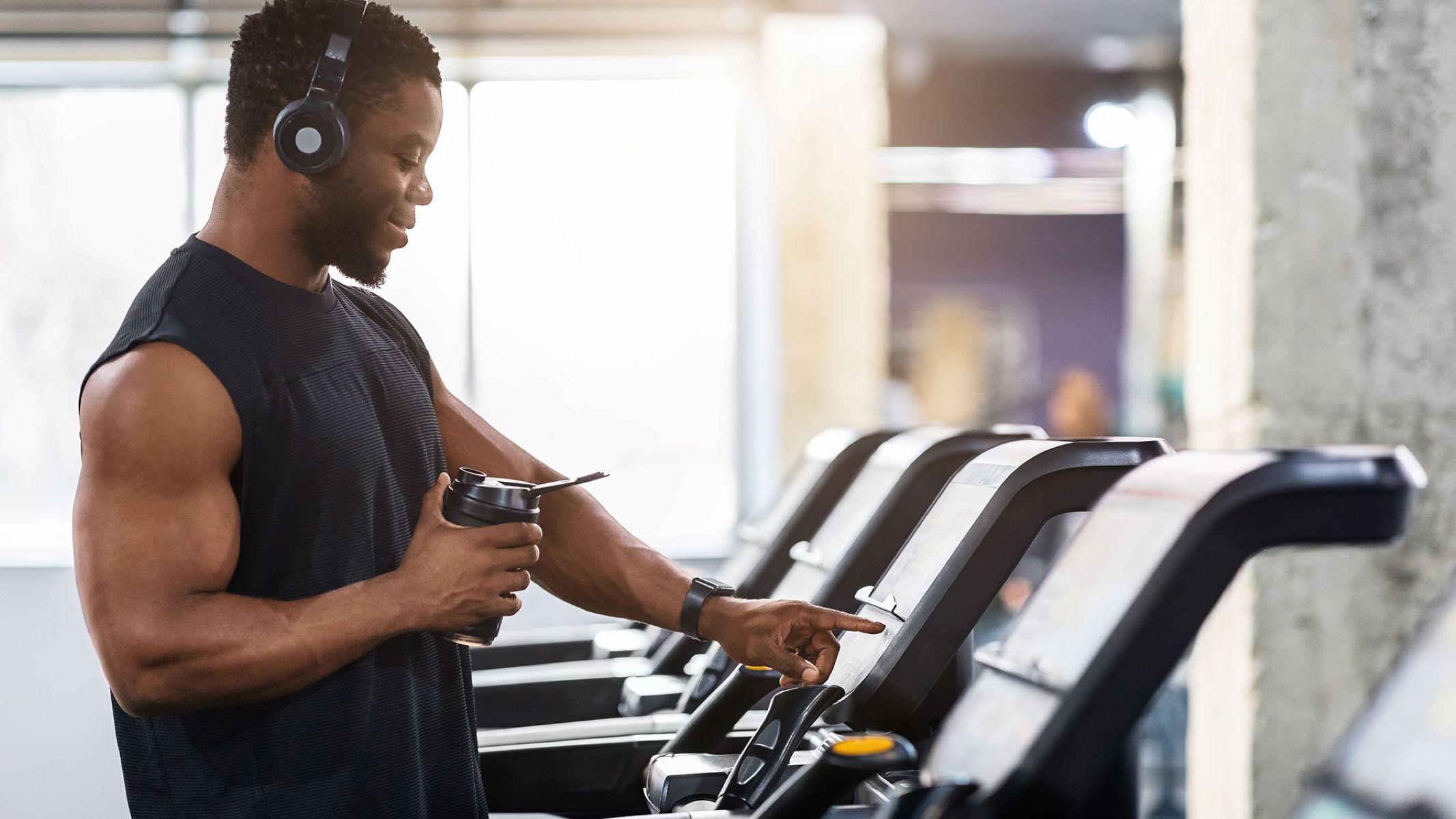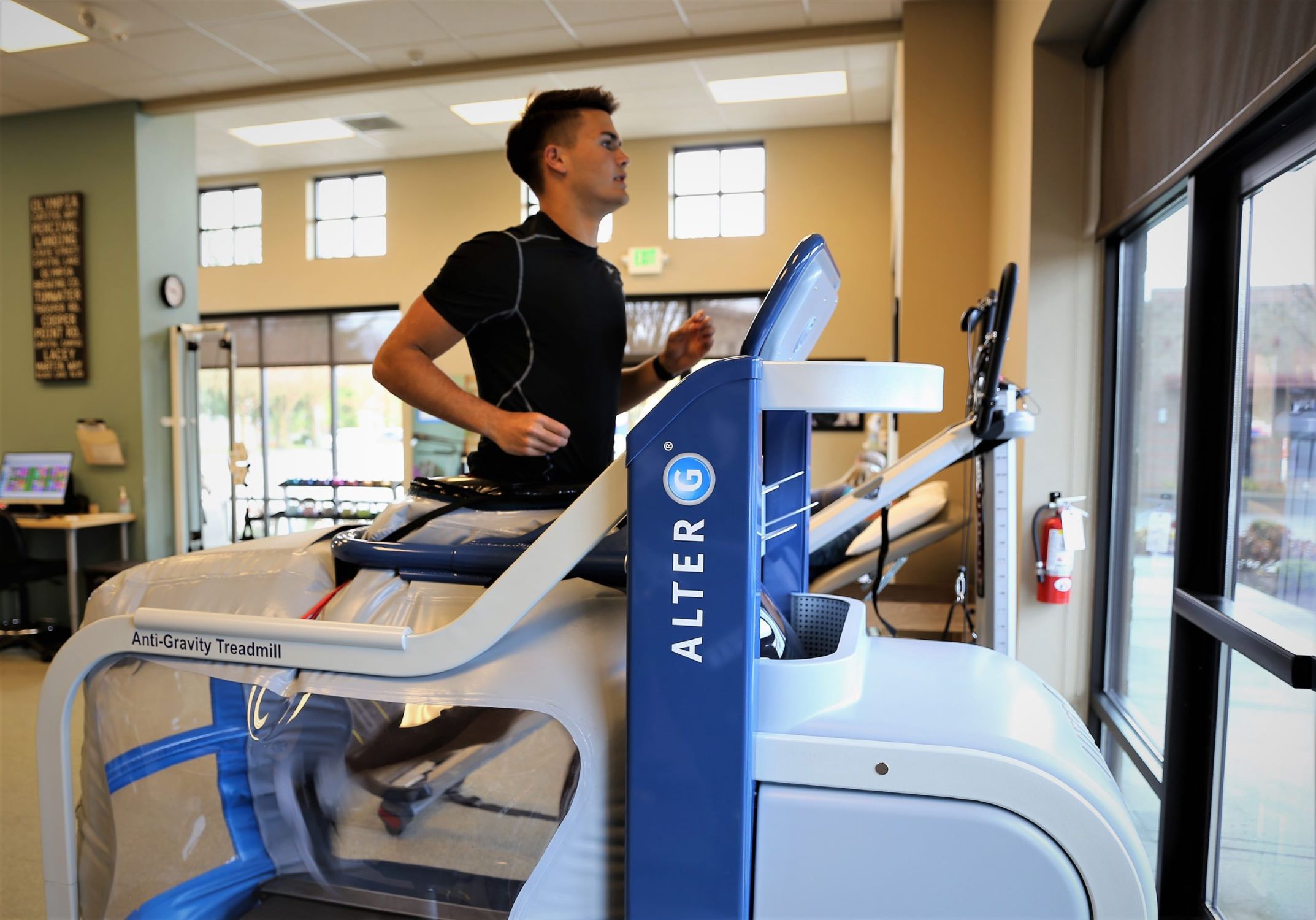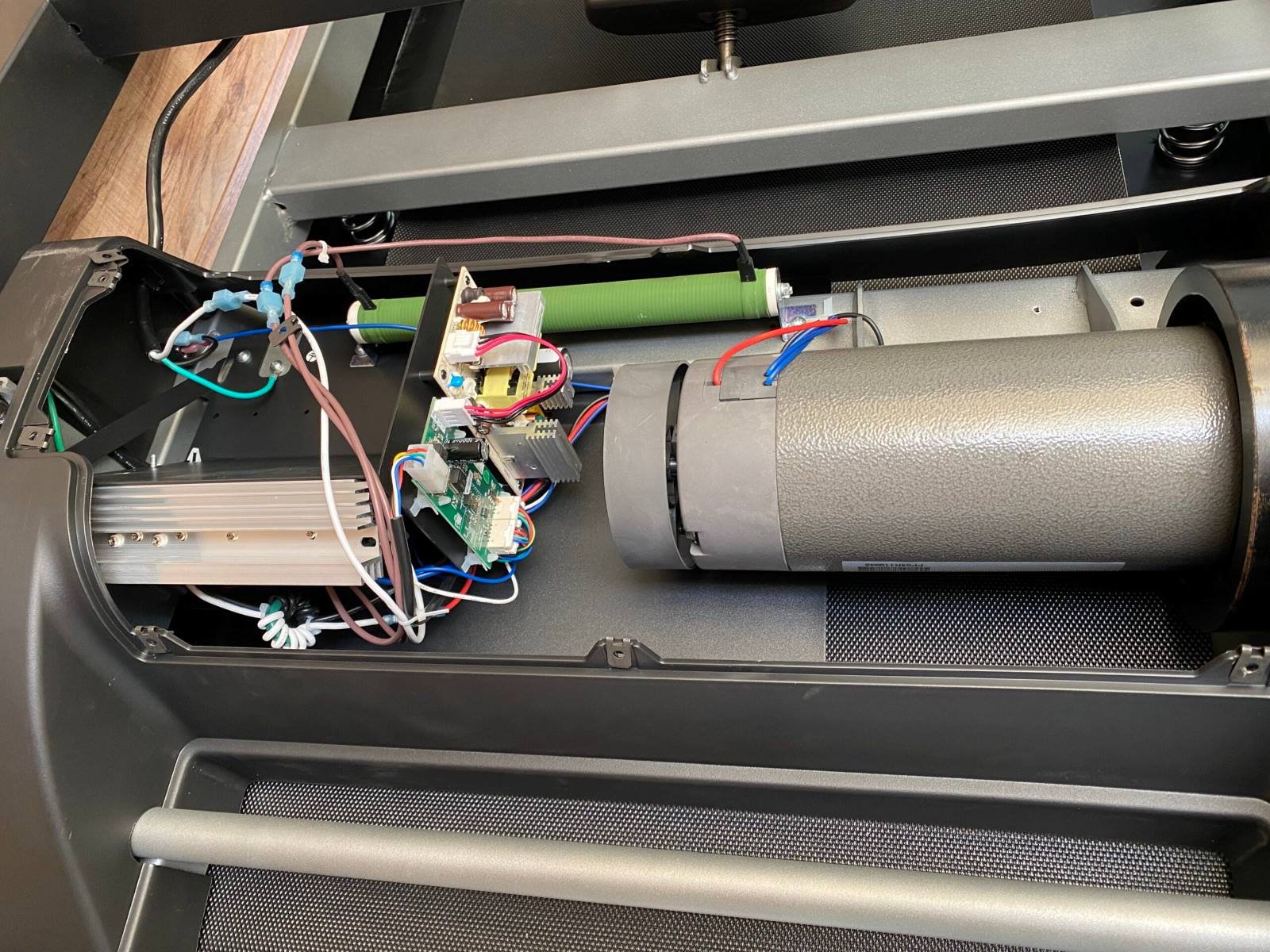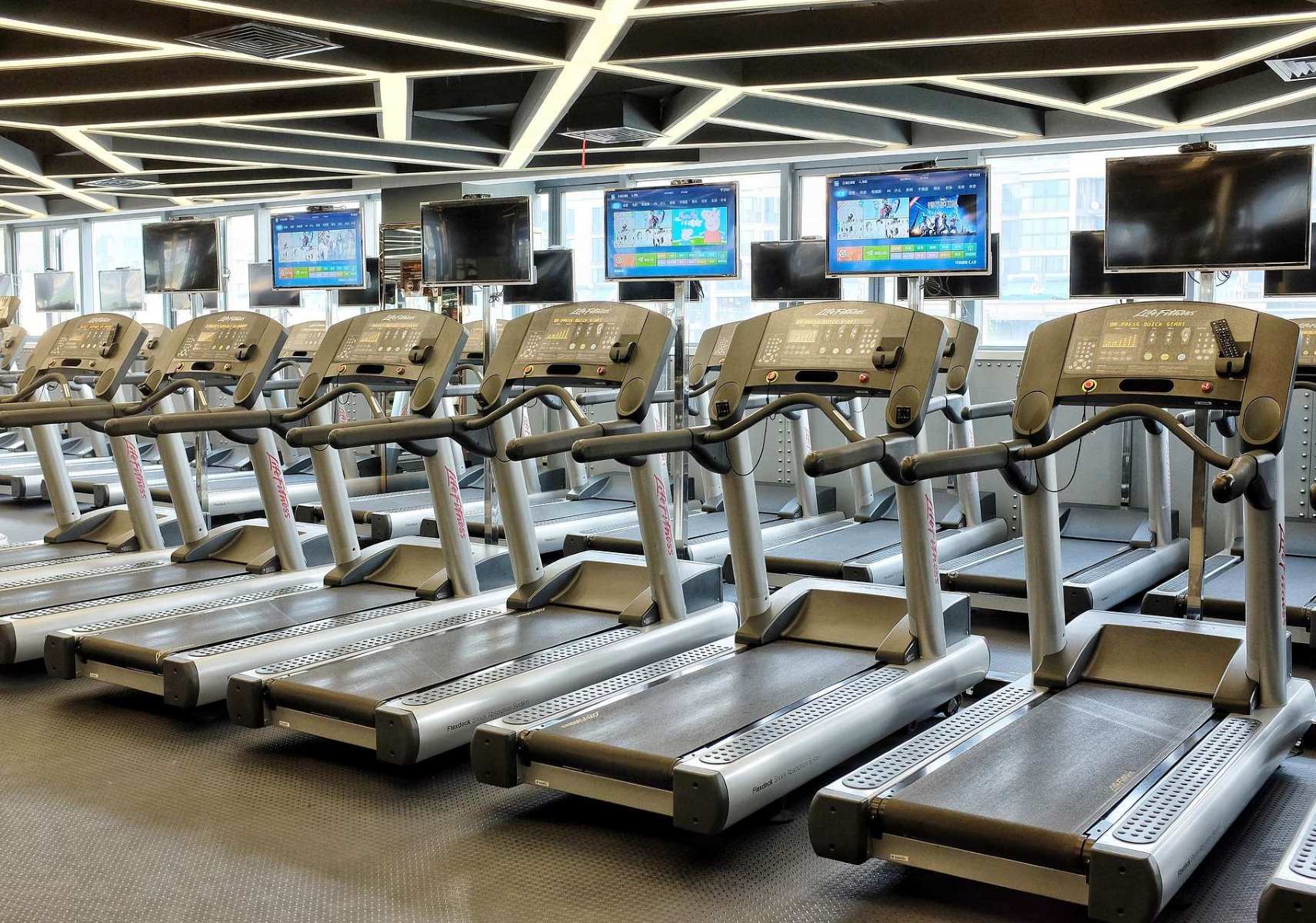

Featured
What To Look For In A Treadmill
Modified: January 2, 2024
Looking for the perfect treadmill? Discover what to look for in a featured treadmill and find your ideal fitness companion today.
Introduction
Finding the perfect treadmill to fit your fitness needs can be a daunting task. With so many options available on the market, it’s easy to feel overwhelmed and unsure of where to start. Whether you’re a seasoned runner or just starting your fitness journey, a treadmill can be a valuable tool for improving your cardiovascular health and overall fitness level.
In this article, we will explore the key factors to consider when choosing a treadmill. From price range and motor power to console features and safety options, we will help you navigate the essential features that make a treadmill worth considering. By understanding these factors, you will be able to make an informed decision and invest in a treadmill that meets your specific needs and preferences.
Keep in mind that each individual has their unique requirements and goals when it comes to using a treadmill. The ideal treadmill for one person may not necessarily be the best choice for another. Therefore, it’s crucial to take into account your fitness level, preferences, and budget before making a decision.
Throughout this guide, we will explore various aspects of treadmills, including their price range, motor power, running surface size, incline and speed options, console features, workout programs, foldable design, weight capacity, noise level, durability and warranty, as well as safety and additional features.
By the end of this article, you will have a comprehensive understanding of what to look for in a treadmill, enabling you to choose the perfect machine that will help you achieve your fitness goals and keep you motivated in your fitness journey. Let’s begin exploring the world of treadmills and uncover the features that will meet your unique needs.
Price Range
When it comes to purchasing a treadmill, one of the first considerations for many people is the price range. Treadmills can vary in price from a few hundred dollars to several thousand dollars. Determining your budget in advance will help you narrow down your options and focus on treadmills that fall within your price range.
It’s important to note that the price of a treadmill often reflects the quality of its components and features. Higher-end models tend to offer more advanced technologies, durability, and a smoother running experience. However, this doesn’t mean that you have to break the bank to find a reliable and functional treadmill.
If you are on a tight budget, there are still plenty of affordable options available that provide decent features and performance. Look for treadmills in the lower price range that offer essential features like a sturdy frame, a decent motor, and a reasonable warranty. Keep in mind that while these treadmills may not offer as many advanced features as higher-priced models, they can still provide a solid foundation for your workouts.
On the other hand, if you are willing to invest more, you can find treadmills in the mid to high price range that offer additional features such as interactive touchscreens, built-in workout programs, adjustable incline and decline options, and larger running surfaces. These features can enhance your training experience, provide more variety in your workouts, and help you stay motivated in the long run.
It’s important to strike a balance between your budget and the features you desire. Consider your fitness goals, frequency of use, and the type of workouts you plan to do. If you’re a casual walker or jogger, a more budget-friendly treadmill with basic features and a stable build may be sufficient. However, if you’re an avid runner or someone looking to engage in intensive training, a higher-priced treadmill with advanced features and greater durability may be a better investment.
Remember, it’s not just about the initial cost of the treadmill, but also the long-term value it provides. Look for treadmills that offer a reasonable warranty and good customer support. A well-built treadmill with a solid warranty will give you peace of mind knowing that you are covered in case of any issues or defects.
Overall, the price range is an important factor to consider when choosing a treadmill. Determine your budget, weigh the features that matter most to you, and find a treadmill that offers the best value within your price range. With a little research and careful consideration, you can find a treadmill that fits your budget and meets your fitness needs.
Motor Power
The motor power of a treadmill is a crucial factor to consider as it directly impacts the overall performance and capabilities of the machine. Motor power is typically measured in horsepower (HP), with higher horsepower indicating a more powerful motor. Understanding the motor power will help you determine whether the treadmill is suitable for your intended use and workout intensity.
For light or moderate use, such as walking or slow jogging, a motor with a lower horsepower (around 1.5 – 2.0 HP) may be sufficient. These motors are generally quieter and more energy-efficient, making them ideal for home use, especially in apartments or condominiums where noise might be a concern. They also tend to be more budget-friendly, making them accessible to a wider range of individuals.
If you plan to engage in more intense workouts, such as running or high-speed interval training, it is recommended to opt for a treadmill with a higher motor power. Look for motors with at least 2.5 HP or more. These motors are designed to handle the increased demands and maintain consistent speed and performance during high-intensity workouts. They also provide smoother and more stable operation, reducing the risk of motor burnout or overheating.
It’s important to note that continuous duty horsepower (CHP) is a more accurate measure of motor power than peak horsepower. Peak horsepower refers to the maximum power the motor can generate in short bursts, while CHP indicates the sustained power output during a workout. When comparing treadmill motors, prioritize the CHP value as it provides a clearer picture of the motor’s capability to handle long-duration workouts effectively.
Another factor to consider is the motor cooling system. Treadmills with effective cooling mechanisms, such as cooling fans or ventilation systems, can help prevent overheating during intense workouts. This not only extends the life of the motor but also ensures a safer and more reliable workout experience.
In addition to motor power, pay attention to the motor warranty offered by the manufacturer. A longer warranty period indicates the manufacturer’s confidence in the durability and reliability of the motor. It’s recommended to choose a treadmill with a motor warranty of at least 2-3 years, although some high-end models may offer warranties of up to 10 years or more.
Remember that the motor power should align with your fitness goals and workout intensity. If you’re a beginner or primarily using the treadmill for walking or light jogging, a lower motor power may suffice. However, if you’re an experienced runner or planning to engage in intense training, investing in a treadmill with a higher motor power will ensure a smoother and more effective workout experience.
Running Surface Size
The running surface size of a treadmill plays a significant role in determining your comfort and freedom of movement during your workouts. It refers to the dimensions of the belt on which you run, walk, or jog. When considering the running surface size, it’s important to find a balance between space constraints and your body’s natural gait.
A wider and longer running surface provides more room for movement and reduces the risk of feeling cramped or restricted during your workouts. This is particularly important for taller individuals or those with a longer stride. A wider belt also gives you the freedom to make slight lateral movements without feeling like you might step off the edge of the treadmill.
Typically, a minimum running surface size of 48 inches in length and 16 inches in width is recommended for comfortable walking or jogging. However, if you plan to run at higher speeds or have a longer stride, opting for a larger running surface size is advisable. Consider treadmills with a running surface size of 55 inches or more in length and 20 inches or more in width for a more spacious and natural running experience.
It’s important to note that the overall size of the treadmill will increase with a larger running surface. Consider the available space in your home or gym and ensure that the treadmill fits comfortably within that space. Keep in mind that you will also need extra space around the treadmill for safe usage and to accommodate any folding or incline features.
Another factor to consider is the thickness and quality of the treadmill deck, which supports the running surface. Look for treadmills with a sturdy and cushioned deck to provide shock absorption and reduce the impact on your joints. A well-cushioned deck can help prevent injuries and provide a more comfortable running experience.
In addition to the dimensions of the running surface, consider the weight capacity of the treadmill. Ensure that the weight capacity is suitable for your body weight to maintain optimal performance and prevent unnecessary strain on the motor and other components.
Remember that the running surface size should align with your body’s natural movement and provide sufficient space for your preferred workout style. Assess your height, stride length, and preferred exercise intensity to determine the most suitable running surface size for your needs.
Incline Options
The incline options of a treadmill refer to the ability to adjust the angle of the running surface. Incline training is a valuable tool to simulate outdoor running or walking conditions, allowing you to target different muscle groups and intensify your workouts. When considering a treadmill, it’s important to assess the incline options available and how they align with your fitness goals.
Most treadmills offer a range of incline levels, usually adjustable by a few degrees. This allows you to mimic uphill or downhill running and engage different muscle groups. With incline options, you can challenge yourself and increase the intensity of your workouts without having to run at faster speeds.
For individuals looking to burn more calories, build strength, or simulate outdoor terrains, treadmills with a higher incline range are ideal. Look for treadmills that offer incline levels of at least 10%, although some models can go as high as 15% or more. These steeper inclines provide a greater challenge and help target muscles in your lower body, such as your glutes, calves, and quadriceps.
Additionally, some treadmills offer decline options, allowing you to simulate downhill running or walking. Decline training can help improve your muscular control and balance while providing a different challenge to your workouts. Not all treadmills offer decline options, so if this feature is important to you, make sure to check for it specifically.
It’s also worth considering how quickly and smoothly the treadmill adjusts to different incline levels. Look for treadmills that have quick and responsive incline adjustment systems. This will allow you to seamlessly change the incline during your workout without interrupting your flow or momentum.
Another feature to consider is the availability of pre-programmed workouts that incorporate incline variations. These workouts can automatically adjust the incline throughout the session, providing a structured and varied training experience. Some treadmills even offer interactive incline training programs that simulate specific outdoor routes or terrains for a more immersive workout experience.
Lastly, don’t forget to consider how the incline feature impacts the overall size and weight of the treadmill. Treadmills with incline options often have a larger footprint and may require more space compared to entry-level models. If space is a concern, look for treadmills with folding options that allow for easy storage when not in use.
Consider your fitness goals and preferences to determine the ideal incline options for your treadmill. Whether you’re looking to simulate outdoor running, improve your cardiovascular fitness, or target specific muscle groups, the incline feature can provide valuable benefits to enhance your workouts.
Speed Options
The speed options of a treadmill refer to the range of speeds at which the belt can move. Having a wide range of speed options is important as it allows you to adjust the intensity of your workouts and cater to your specific fitness goals and abilities.
Most treadmills offer a speed range starting from as low as 0.5 mph and going up to 12 mph or more. Beginners and individuals who prefer a slower pace may find lower speed options more suitable, while experienced runners or those looking for high-intensity training may require higher speeds to challenge themselves.
When choosing a treadmill, consider the speed increments that the machine offers. Look for treadmills that allow you to make small and precise adjustments to the speed. Fine-tuning your speed in smaller increments can be particularly useful if you’re performing interval training or gradually increasing your pace during a workout.
Another feature to look for is the ability to save and program custom speed settings. This can be beneficial if you have specific speed goals or prefer to have preset speed options for different types of workouts. Being able to easily access your preferred speeds without manually adjusting the speed each time can improve the efficiency and convenience of your training sessions.
It’s also important to consider the quality and responsiveness of the speed control system. Look for treadmills that offer smooth speed transitions and adjust seamlessly to changes without any lags or delays. A well-designed speed control system ensures a more comfortable and natural running experience.
For individuals who enjoy interactive and engaging workouts, some treadmills also offer speed-controlled programs. These programs automatically adjust the speed based on the intensity of the workout or specific training goals. This can help keep you challenged and motivated as the treadmill takes care of adjusting the speed for you.
Lastly, consider how the speed options fit within your desired workout routines. Whether you’re a casual walker, a jogger, or an experienced runner, it’s important to choose a treadmill that can accommodate your preferred speeds. If your fitness goals involve low-intensity exercises or walking, a treadmill with a lower top speed may be suitable. However, if you’re aiming for high-speed sprints or intense running, a treadmill with a higher top speed is essential.
Overall, the speed options of a treadmill are a crucial consideration when selecting a machine that meets your fitness needs. Take into account your current fitness level, workout preferences, and future goals to ensure that the speed range offered by the treadmill aligns with your requirements.
Console Features
The console of a treadmill is the control panel that includes various features and functions to enhance your workout experience. It serves as the hub for monitoring your progress, adjusting settings, and accessing different workout programs. When choosing a treadmill, consider the console features available and how they align with your preferences and fitness goals.
One of the key console features to consider is the display screen. Look for a clear and easy-to-read screen that provides essential workout information such as speed, distance, time, calories burned, and heart rate. A larger and backlit screen can improve visibility, particularly in low-light conditions or if you have poor eyesight.
Many treadmills now offer touchscreen displays, similar to those found on smartphones or tablets. Touchscreen consoles provide a user-friendly interface, allowing you to navigate through different options with ease. They also offer more interactive features, such as access to online workout apps, virtual coaching, and internet connectivity for entertainment purposes.
Heart rate monitoring is another important console feature to consider. Treadmills often come equipped with heart rate sensors on the handlebars or the ability to connect to wireless heart rate monitors. This feature allows you to track your heart rate during workouts, helping you stay within your target heart rate zone and maximize your cardiovascular fitness.
Many treadmills also offer built-in workout programs to add variety and challenge to your routines. These programs can include interval training, hill climbs, and customized workouts based on your fitness goals. Look for programs that align with your preferences and offer a range of intensities and durations to keep you motivated and engaged.
Additional console features to consider include audio capabilities, such as built-in speakers or Bluetooth connectivity, allowing you to listen to music or podcasts while exercising. Some treadmills also offer USB ports or media shelves for conveniently placing your devices or charging them during workouts.
It’s worth mentioning that console features are not solely focused on entertainment and convenience. Safety features like an emergency stop button or safety tether are crucial additions to ensure your well-being during workouts. These features allow you to quickly stop the treadmill in case of any emergencies or if you feel unsafe.
When evaluating console features, also pay attention to the intuitiveness of the console layout and the ease of navigation. A user-friendly console will make it simpler for you to adjust settings, switch between different workout modes or programs, and track your progress efficiently.
Ultimately, the console features of a treadmill should enhance your overall workout experience, providing you with the information, functionality, and entertainment options you desire. Consider the features that are most important to you and make sure the treadmill you choose offers the right combination to keep you motivated and engaged throughout your fitness journey.
Workout Programs
Workout programs are a valuable feature of treadmills that offer a structured approach to your exercise routine. These programs are pre-designed workouts that incorporate a specific combination of speed, incline, and duration to help you achieve your fitness goals more effectively. When selecting a treadmill, consider the variety and customization options of the workout programs to ensure they align with your fitness needs and preferences.
The number of built-in workout programs can vary from treadmill to treadmill. Basic models may offer a handful of programs, while more advanced models can provide a wide range of options that cater to different fitness levels and objectives. Look for treadmills that offer a sufficient number of programs to keep your workouts interesting and varied over time.
Consider the type of workouts you enjoy or want to incorporate into your routine. Common types of workout programs include interval training, hill climbs, fat burning programs, cardio workouts, and endurance challenges. Some treadmills also offer customizable programs where you can input your desired speed and incline settings based on your preferences.
If you’re someone who enjoys virtual training or wishes to engage in specific challenges, certain treadmills offer interactive workout programs. These programs can simulate outdoor running routes, virtual races, or even have real-time coaching options to provide guidance and motivation during your workouts.
Take into account the ability to personalize and track your progress within the workout programs. Look for treadmills that allow you to customize the duration, intensity, and specific goals of each program. This flexibility is especially important if you have specific training objectives or if you want to gradually increase your workout difficulty over time.
Additionally, treadmills with workout programs that include heart rate monitoring can provide accurate feedback on your intensity level and help you stay within your target heart rate zone. This feature is particularly useful for individuals interested in heart rate-based training or those looking to improve their cardiovascular fitness.
Consider the ease of program selection and navigation within the treadmill’s console. A user-friendly interface that allows you to quickly access and choose programs will enhance your overall workout experience.
Remember that the availability of workout programs can add variety, challenge, and structure to your treadmill workouts. Whether you’re a beginner looking to establish a routine or an experienced athlete seeking to push your limits, workout programs can be an essential tool to help you stay motivated and achieve your fitness goals.
Foldable Design
The foldable design is a convenient feature offered by many treadmills that allows you to save space and easily store the machine when it’s not in use. This feature is particularly valuable for individuals with limited workout space or those who want the flexibility to use their space for other activities.
Foldable treadmills typically have hinges or mechanisms that allow you to vertically fold the deck or console, reducing the overall footprint of the machine. This compact design makes it easier to store the treadmill in a closet, under a bed, or in a corner of the room without taking up too much space.
When considering a foldable treadmill, it’s important to evaluate the stability and durability of the folding feature. Look for treadmills with sturdy construction and secure locking mechanisms to ensure that the machine remains stable and safe during use. A poorly designed folding mechanism may result in wobbling or potential safety hazards, so it’s crucial to choose a treadmill from a reputable manufacturer known for their quality and reliability.
Keep in mind that foldable treadmills may have a slightly smaller running surface or overall weight capacity compared to non-foldable models. This is due to the need for a more streamlined and compact design. Before making a purchase, check the weight capacity and running surface dimensions to ensure they meet your specific requirements.
Another factor to consider is the ease of folding and unfolding the treadmill. Look for treadmills that have a simple and hassle-free folding mechanism that can be operated without much effort or assistance. Treadmills with hydraulic assistance or auto-fold features can make the process even more convenient, allowing you to easily fold and unfold the treadmill with minimal manual effort.
If you plan on frequently folding and unfolding the treadmill, consider the weight of the machine and whether it has transportation wheels. These features make it easier to move the treadmill around and store it in different locations without straining your back or having to lift the entire machine.
It’s important to note that while foldable treadmills offer convenience and space-saving benefits, they may not be as durable or sturdy as non-foldable models. However, many high-quality foldable treadmills are designed to maintain stability and durability, so be sure to read product reviews and choose a reputable brand that offers reliable folding treadmills.
Overall, the foldable design is a desirable feature for those with limited workout space or the need for portability. By choosing a treadmill with a reliable and well-designed folding mechanism, you can have the flexibility to easily store and set up your treadmill whenever needed, allowing you to maximize your space and enjoy convenient workouts.
Weight Capacity
The weight capacity of a treadmill refers to the maximum weight that the machine can safely support during use. It’s an important factor to consider as exceeding the weight capacity can lead to the treadmill being unstable, causing potential safety hazards and affecting the overall performance of the machine.
When selecting a treadmill, it’s essential to choose one that can accommodate your body weight and any additional weight from incline or high-intensity workouts. Treadmills generally have weight capacity ranges that can vary from a few hundred pounds to over 400 pounds, depending on the model.
To determine the appropriate weight capacity, consider both your current body weight and any weight loss or gain goals. It’s recommended to choose a treadmill that can support a weight capacity at least 50 pounds higher than your current weight. This provides a safety cushion and ensures that the treadmill can handle any fluctuations in weight during your fitness journey.
Exceeding the weight capacity of a treadmill can lead to increased stress on the motor, deck, and other components, potentially resulting in premature wear and tear. It can also lead to a less stable running surface, affecting your overall workout experience and increasing the risk of injuries.
It’s important to note that weight capacity is not the only consideration for stability. The build quality and construction of the treadmill play a significant role as well. Look for treadmills with a solid and durable frame that can withstand heavier weights without compromising stability.
If you are near or slightly above the weight capacity of a particular treadmill, it’s recommended to consider a model with a higher weight capacity to ensure optimal performance and longevity of the machine. Investing in a treadmill with a higher weight capacity might be more expensive initially, but it will provide you with safe and comfortable workouts in the long run.
In addition to weight capacity, pay attention to user reviews and testimonials from individuals with similar body types and weights. This can provide insight into how well the treadmill performs for individuals with similar requirements.
Lastly, it’s important to regularly check and maintain the treadmill to ensure optimal performance, regardless of the weight capacity. Perform routine inspections, such as checking the belt tension, lubricating the deck, and tightening any loose bolts or screws, to keep the machine in top condition.
By selecting a treadmill with an appropriate weight capacity and paying attention to the build quality, you can ensure a safe, stable, and long-lasting machine that supports your fitness journey without compromise.
Noise Level
The noise level of a treadmill can significantly impact your overall workout experience, particularly if you plan to exercise in a shared space or at home. Choosing a treadmill with a low noise level ensures a more peaceful and enjoyable workout environment for both you and those around you.
Treadmills produce noise primarily from the motor, belt movement, and impact with the running deck. While some noise is inevitable, there are certain factors to consider that can help minimize the noise level.
One factor to assess is the quality and design of the motor. Look for treadmills with high-quality, quiet motors that are designed to reduce noise during operation. Direct current (DC) motors tend to be quieter compared to alternate current (AC) motors. Additionally, brushless motors tend to produce less noise due to the absence of physical brushes.
The running surface and deck design also play a role in noise production. Look for treadmills that have cushioned decks or shock absorption systems. These features help reduce the impact and noise generated when your feet strike the running surface. By minimizing the vibrations and noise, you can enjoy a quieter and more comfortable workout experience.
Proper maintenance and lubrication can also contribute to reducing noise levels. Regularly lubricate the belt and deck according to the manufacturer’s instructions to ensure smooth and quiet operation. Loose belts or worn-out components can cause unnecessary noise, so it’s important to address any maintenance issues in a timely manner.
If you’re concerned about noise, consider treadmills that offer noise reduction technologies or features. Some models integrate noise-dampening materials and innovative designs to minimize vibrations and sound. These features can significantly reduce the noise level, making your workouts quieter and more enjoyable.
It’s worth noting that higher-speed or higher-incline workouts may produce more noise compared to walking or jogging at lower speeds. If noise is a primary concern, consider adjusting your workouts to lower intensity levels or choosing a treadmill with noise reduction features to ensure a quieter experience.
It’s helpful to read user reviews and testimonials to get an idea of the noise level of specific treadmill models. Look for feedback from individuals who have used the treadmill in a home or shared space setting to get a more accurate picture of its noise performance.
Ultimately, choosing a treadmill with a low noise level ensures a more peaceful and enjoyable workout experience. By considering the motor quality, deck cushioning, maintenance, and noise reduction features, you can select a treadmill that provides a quiet and comfortable workout environment for you and those around you.
Durability and Warranty
Durability is a crucial factor to consider when purchasing a treadmill as it determines the longevity and performance of the machine. A durable treadmill is built with high-quality materials and components that can withstand regular use, intensive workouts, and the test of time. Additionally, the warranty offered by the manufacturer provides assurance and protection against any potential defects or issues that may arise.
When assessing the durability of a treadmill, pay attention to the construction of the frame and deck. Look for treadmills made from sturdy materials, such as steel or aluminum, which provide stability and longevity. A robust frame ensures that the treadmill can withstand the impact and weight of your workouts without compromising performance or safety.
The quality of the running belt is another important consideration for durability. Look for treadmills that offer thick and durable belts that can withstand continuous use and resist wear and tear. A durable running surface not only ensures a smoother and more comfortable workout but also prolongs the lifespan of the treadmill.
It’s also worth considering the weight capacity of the treadmill, as a higher weight capacity often correlates with a sturdier and more durable machine. Choosing a treadmill with a weight capacity that comfortably exceeds your own weight can provide an added level of durability and safety.
In addition to the physical aspects of durability, it’s important to evaluate the warranty offered by the manufacturer. A comprehensive warranty demonstrates the manufacturer’s confidence in the quality and durability of their product. Look for warranties that cover the motor, frame, and other components for an extended period. A warranty of at least 2-3 years on the motor and frame is recommended, but some high-end treadmills may offer warranties of 5 years or more.
Be sure to read and understand the terms and conditions of the warranty. Pay attention to any exclusions or limitations, such as commercial use or improper maintenance, which may affect the coverage. It’s also helpful to familiarize yourself with the manufacturer’s customer support and service options in case you encounter any issues or have questions about the treadmill.
User reviews and testimonials can provide valuable insights into the durability and performance of specific treadmill models. Feedback from individuals who have used the treadmill for an extended period can give you an idea of how well it holds up over time.
Remember that investing in a durable treadmill with a reliable warranty ensures that you can enjoy a safe and effective workout experience for years to come. Consider the construction, weight capacity, and warranty offered by the manufacturer to make an informed decision and choose a treadmill that aligns with your durability requirements.
Safety Features
Safety is of utmost importance when using a treadmill, and having appropriate safety features can help prevent accidents and injuries during your workouts. When selecting a treadmill, consider the following safety features to ensure a safe and secure exercise experience.
One essential safety feature is an emergency stop button or safety tether. This feature allows you to quickly stop the treadmill in case of any emergencies, loss of balance, or if you feel unsafe. The emergency stop button should be easily accessible and within reach while running or walking on the treadmill.
Another crucial safety consideration is the running belt’s grip and traction. Look for treadmills that have a textured, non-slip running surface to minimize the risk of slipping or losing your footing during workouts. This feature is particularly important if you plan to run at higher speeds or perform high-intensity interval training.
Treadmills with handrails provide an additional safety support during your workout. The handrails offer stability, especially for individuals who require extra assistance or have balance concerns. When opting for a treadmill with handrails, ensure that they are sturdy and comfortable to hold, offering a secure grip throughout your exercise routine.
If you have small children or pets at home, treadmills with safety locks or password-protected consoles can prevent accidental or unauthorized use. This feature ensures that the treadmill remains inactive when not in use and mitigates the risk of injury to curious children or pets.
When evaluating safety features, consider treadmills that have a low step-up height. This makes it easier and safer to get on and off the treadmill without any risk of tripping or falling. A low step-up height is particularly important for individuals with mobility issues or those who plan to use the treadmill for rehabilitation purposes.
Some advanced treadmills offer heart rate monitoring as a safety feature. By monitoring your heart rate, you can ensure that you are exercising within your target heart rate zone and avoid pushing yourself too hard. This feature can help prevent overexertion and identify any abnormal heart rate patterns during your workouts.
Pay attention to the stability and sturdiness of the treadmill, especially if you are a heavier or taller individual. Look for treadmills that have a wide and solid frame to minimize any wobbling or instability during your workouts. A stable treadmill provides a safer platform for running, walking, or jogging.
Lastly, ensure that you are aware of the safety guidelines and recommendations provided by the manufacturer. Familiarize yourself with the user manual and follow all instructions for proper usage, maintenance, and safety precautions. It’s important to maintain your treadmill regularly, ensuring that any bolts, screws, or mechanisms are tightened and in good working condition.
Remember, safety should always be a top priority when considering a treadmill. By choosing a treadmill with appropriate safety features, you can enjoy a worry-free workout experience and minimize the risk of accidents or injuries.
Additional Features
In addition to the essential features, many treadmills come with a range of additional features that can enhance your workout experience, provide convenience, and help you achieve your fitness goals. While not necessary, these features can add value to your treadmill and make your workouts more enjoyable and effective.
One common additional feature is built-in speakers or audio connectivity. Treadmills equipped with speakers allow you to listen to music, podcasts, or audiobooks directly from the treadmill’s console. Some treadmills also have Bluetooth connectivity, allowing you to wirelessly connect your devices and stream audio without the need for cables.
Another popular feature is a cooling fan or ventilation system. These additions help keep you cool and comfortable during your workouts, especially if you tend to sweat a lot or exercise in a warm environment. Look for treadmills with adjustable fan speed settings or built-in air circulation to ensure optimal comfort.
If you enjoy a more interactive workout, consider treadmills with touchscreen displays that offer access to various fitness apps, virtual training programs, or streaming services. These features can provide you with a multitude of workout options, personalized coaching, and the ability to track and analyze your progress in real-time.
Some treadmills also have built-in workout tracking capabilities. These features allow you to monitor your workout data, including distance covered, calories burned, and time elapsed. By tracking this information, you can set goals, track your progress, and stay motivated as you work towards achieving your fitness targets.
Wireless connectivity and compatibility with fitness wearables or heart rate monitors can be beneficial for individuals who like to track their heart rate or sync their workout data with other fitness apps or devices. These additional features allow for a more integrated and comprehensive approach to monitoring and analyzing your fitness activities.
Certain treadmills offer entertainment options such as media shelves or tablet holders, allowing you to easily place and secure your devices while watching TV shows, movies, or streaming content during your workouts. This feature can help make your workouts more enjoyable and pass the time quickly.
Some high-end treadmills also offer customizable user profiles, allowing multiple individuals to store their workout preferences and settings. This feature is especially useful for households or fitness facilities where different users have varying workout needs and preferences.
While these additional features can enhance your treadmill experience, it’s important to prioritize the core features that align with your fitness goals and budget. Determine what features are essential versus those that would be nice to have, and choose a treadmill that offers the right combination of features to meet your needs.
These additional features can add convenience, entertainment, and flexibility to your workouts, making your treadmill experience more enjoyable and motivating. Consider the features that align with your preferences and goals to choose a treadmill that offers the most value for your fitness journey.
Conclusion
Choosing the right treadmill involves considering various factors that are essential for your fitness needs and preferences. By assessing price range, motor power, running surface size, incline options, speed options, console features, workout programs, foldable design, weight capacity, noise level, durability and warranty, safety features, and additional features, you can make an informed decision and select a treadmill that aligns with your goals and budget.
The price range sets the foundation for your search, helping you determine what you can afford and what features are realistic within your budget. Motor power determines the treadmill’s performance, as higher power allows for smoother and more intense workouts. Running surface size is important for providing sufficient space and comfort during your runs or walks, while incline options add versatility to your training routines.
Speed options give you the flexibility to adjust your workout intensity, while console features offer convenience and entertainment options to enhance your exercise experience. Workout programs can provide structure and variety to keep you motivated, while a foldable design allows for easy storage if space is a concern.
Weight capacity ensures the treadmill can safely accommodate your body weight, noise level considerations aim for a peaceful workout environment, and durability and warranty are crucial for a long-lasting and reliable machine. Safety features such as emergency stop buttons and enhanced deck grip prioritize your well-being during workouts.
Additional features such as speakers, cooling fans, touchscreen displays, workout tracking capabilities, and entertainment options can add value and personalized experiences to your treadmill workouts.
When it comes to selecting a treadmill, there is a wide range of options available to suit different budgets, needs, and preferences. It’s important to strike a balance between the features that are essential to your fitness goals and those that enhance your overall exercise experience.
Considering all these factors will help you make an informed decision and choose the treadmill that best suits your needs, ensuring that you have an enjoyable and effective workout experience for years to come. So take the time to research, compare different models, and find the treadmill that will help you reach your fitness goals and support your journey to a healthier lifestyle.
